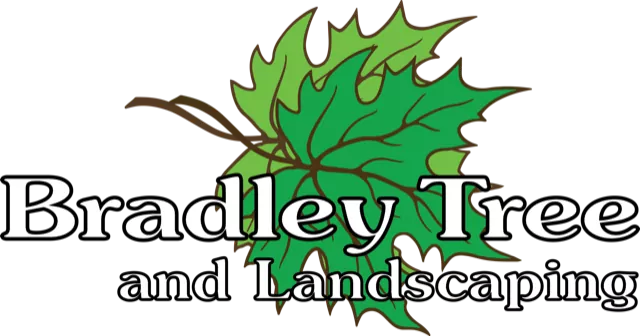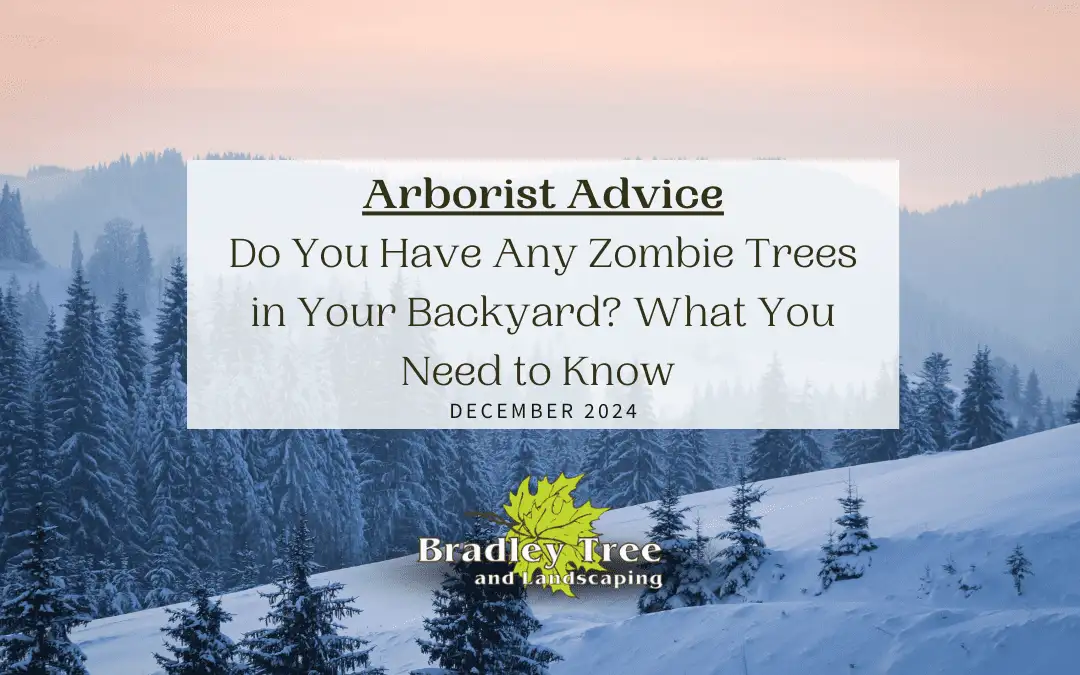Everyone knows what a zombie is, the slowly shuffling husks that aren’t quite dead or alive. They can appear alive at a glance but after looking for a bit the picture comes into focus. Did you know that something similar can happen to our beloved trees too? Believe it or not, its real, and they’re commonly called zombie trees. But, what is a zombie tree, how do you spot one, and what can you do if one is in your yard?
Welcome back to the Bradley Trees blog, where we go to great heights to please you. Today, we’re doing a little nightmare after the holiday special and talking about zombie trees, and the things you need to know. So hop on in and lets get started!

What Are Zombie Trees?
Zombie trees are a lot like the shuffling undead, in that they appear to be alive but are in fact dying, or already dead in some cases. Healthy trees have enough energy and nutrients running through them to be strong and upright. Zombie trees, then, lack the proper resources, even if they display some green leaves or buds. They’re in the initial stages of their deaths and are rapidly losing structural integrity.
Maybe the inside of the tree is even beginning to rot and a mild windstorm is enough to send the canopy careening and crashing down. And in the process of crashing down, these trees can damage or destroy homes, cars, power lines, and more. Unsuspecting passersby could get caught in the collapse. These decaying and dying trees are just one weather event from catastrophe.
Signs of a Potential Lurking Zombie Tree
Zombie trees might look relatively healthy at first glance, but there are some signs you can look out for to see if your tree might be a zombie in disguise. Some of the bigger signs include:
- Brittle Branches: When a tree is dead or dying its branches are more brittle and prone to breaking than a healthy tree. They can snap off and potentially scratch and/or chip the paint of cars below from nearly any outside force.
- Empty Canopy: a healthy tree’s canopy is lush and a vibrant green. It’s thick and provides a nice, full amount of shade on a sunny day. A zombie tree’s canopy is sparse and thinning, with few leaves, and those that remain look sickly.
- Bark Peeling Back: If the bark has an abnormal peeling quality to it, that’s usually a pretty big sign that there is major internal damage to the tree.
- Fungal Growth: Mushrooms and other fungi that grow at the base of the tree, the roots, and/or trunk are near sure signs that the tree is decomposing.
- Leaning trunk: Trees don’t lean that much naturally, so a progressing lean or an unnatural angle could mean the roots are no longer able to keep the tree upright, making a fall imminent.
“How Do I ID a Zombie Tree?”
We hear you getting ready to hit the search bar in that other tab! Don’t worry, we’re getting to that. Knowing how to ID a dead or dying tree is key to preventing damage from occurring.
- The Scratch Test: A quick and simple way to tell if a tree may be dead is by scratching a small section of the bark. If the layer underneath is green and moist, its alive and healthy. If its brown and dry, you should probably call an ISA-certified arborist, because at least that section of the tree is most likely dead.
- Inspect the root system: Check the base of the tree for roots that are exposed or other signs of instability. A failing root system is a good indicator a tree may become a zombie.
- Check the Top Branches: Dead branches can be a dead giveaway to spotting one, but the top branches is typically where the decline often begins.
- Tap and Listen: Tap the tree trunk using a mallet or hammer, gently. A hollow sound could mean a severely compromised internal system.
What Causes Trees to Become Zombies?
Trees decay and die for lots of different reasons. They’re living things like we are, after all. Several factors can influence their demise, and knowing them could help you add years to the healthy life of your trees.
- Droughts: Trees are plants, and they rely on water. They require watering in a consistent manner, and without it they can slowly weaken and die.
- Storms: Severe storms bring a variety of things that could harm the ability of trees to stay upright. Some that can cause the most damage are harsh windstorms, lightning, and ice storms.
- Insects and disease: We’ve covered a lot on the various invasive insects and diseases that can cause chaos to trees. Borers and fungal diseases can cause significant damage right under your nose.
- Compacted soil: When the soil is low in nutrients, the tree was fighting an uphill battle its while life. Eventually, it gives out when it doesn’t have what it needs to survive.
- Root damage: Roots can be damaged from a variety of sources, which is why is important to make sure you discuss your trees with the landscapers and/or construction crew before any heavy machinery comes out.
The Bradley Trees Way
Bradley Tree and Landscaping have been in the arbor business for over four decades, since 1982. That makes us as tied to the Buffalo, NY area as anyone and the perfect choice for your tree care needs. A big box, national company could do it, but we know native from invasive species to the region, best care for our climate, and more of the minutiae of landscaping needed here.
Stay tuned to the Bradley Trees blog, where we regularly go over some basic tree care tips and general guidelines on keeping your landscape and plants healthy! You can also check out our FaceBook and YouTube pages for more arbor info.
Don’t wait until it’s too late, taking preventive measures is crucial. Remember, it’s better to be safe than sorry, especially when a tree is left untreated and becomes structurally unsound. We are always eager to help and provide tailor-made solutions for your tree needs.
Here at Bradley Tree and Landscaping, we go to great heights to please you. Get in touch with our ISA-Certified Arborists today and let’s safeguard these gorgeous trees, together.

